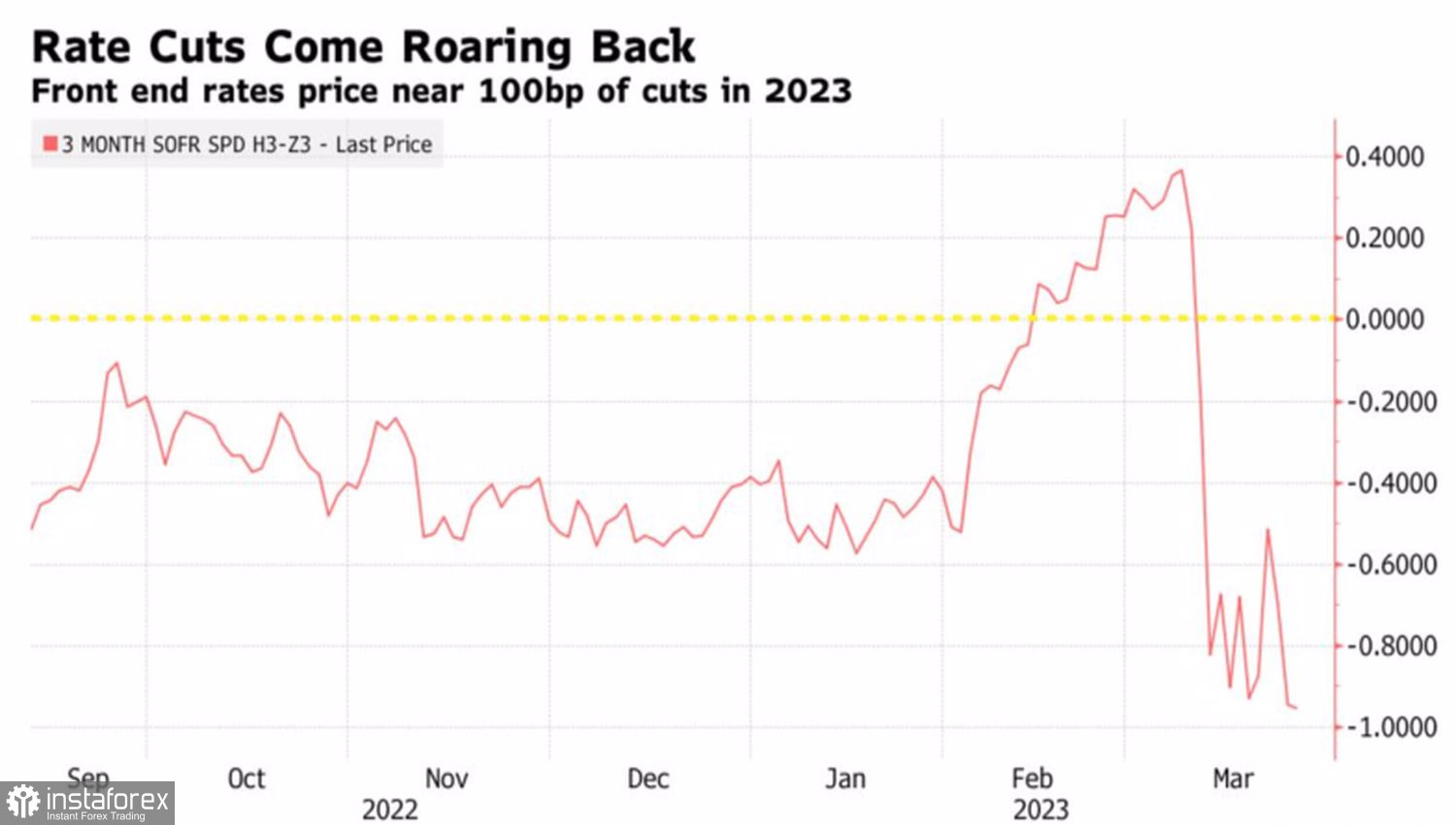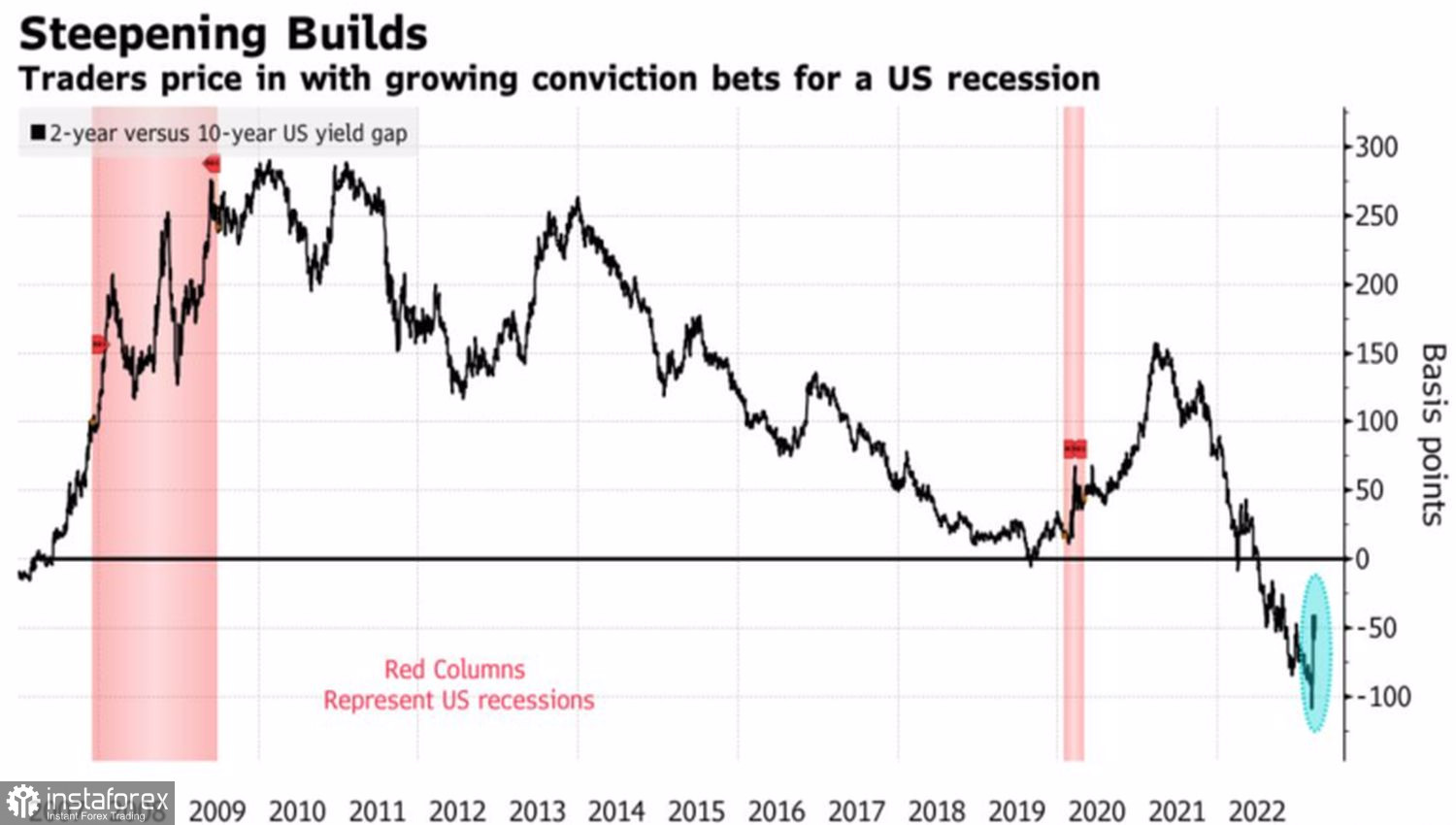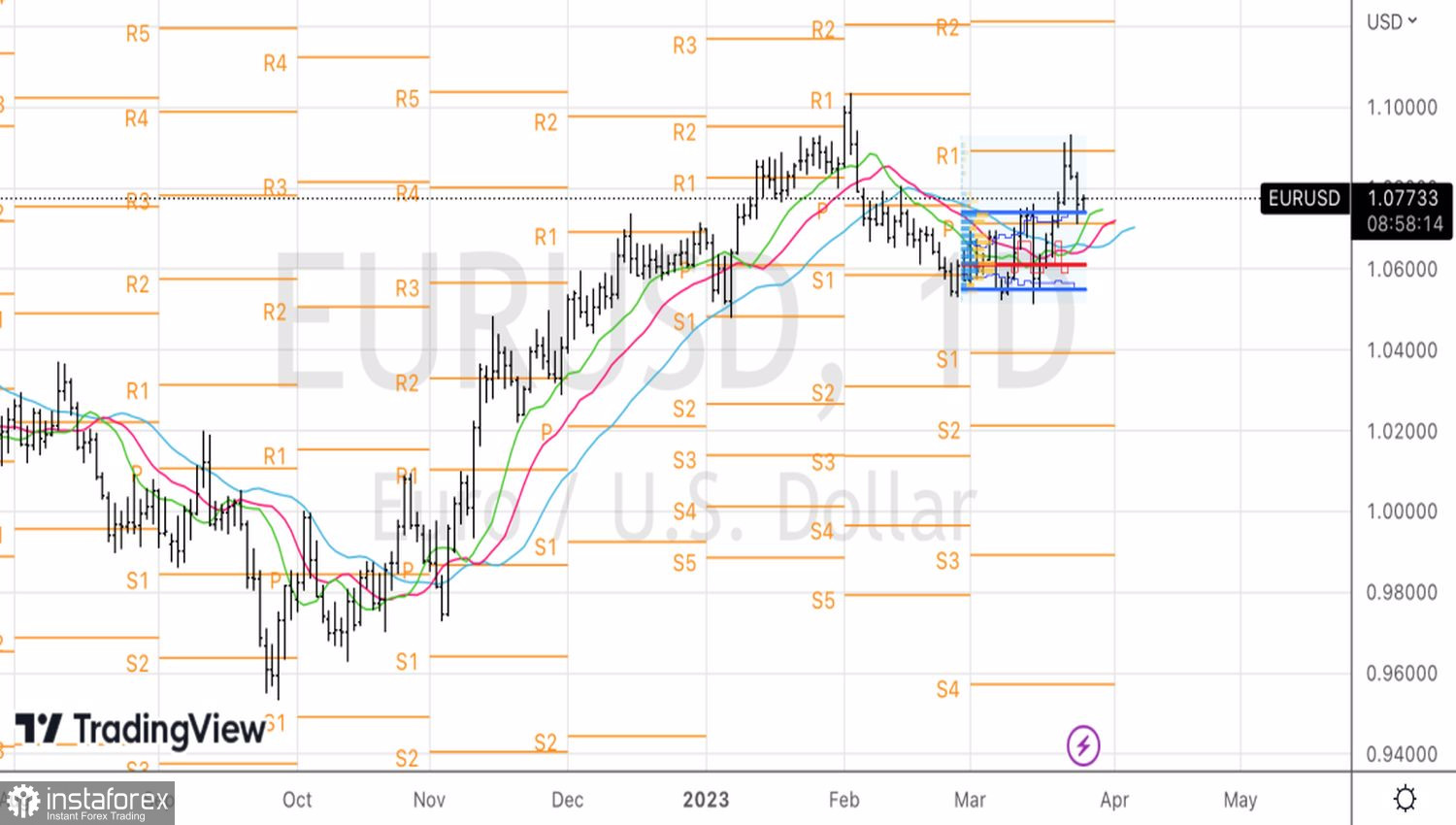What will happen to the U.S. dollar? It depends on when! The BofA predicts that the USD index will decline in the medium to long term, as it is overvalued. However, in the short-term investment horizon, interest in the U.S. currency may return as the banking crisis recedes into the shadows and the market's attention shifts to an old problem—inflation. However, while the mass media headlines are full of messages about the problems of credit institutions and ways to solve them, the U.S. dollar remains under pressure.
With the aim of preventing a fourth bankruptcy in the system, this time from First Republic Bank, the Fed and the Treasury are considering expanding the emergency lending program. This will help the troubled institution cope with the lack of liquidity. On paper, this means another expansion of the Fed's balance sheet, which cannot but please the EURUSD bulls. They took on board the factor of a potential dovish reversal—according to the derivatives market, the federal funds rate will fall by as much as 100 bps in 2023.
Dynamics of the proposed federal funds rate cut

Essentially, the Fed is engaged in monetary expansion by expanding its balance sheet, and derivatives are waiting for it to continue its banquet in the form of a serious easing of monetary policy. In theory, this is favorable for risky assets and a clear negative for the U.S. dollar. Nevertheless, stock indices are in no hurry to rise, just as the USD is in no hurry to fall. So what is the reason?
Expectations of a recession are to blame. The bond yield curve has been signaling it for some time. In March, FOMC officials' speeches began to synchronize with its readings. For example, Minneapolis Fed President Neel Kashkari said that a banking crisis could trigger a recession in the U.S. economy. As a result, expectations of a federal funds rate cut are perceived as the first sign of recession, which keeps the S&P 500 up and the USD index afloat.
U.S. yield curve dynamics

Meanwhile, good news keeps coming from Europe. Following the growth of business activity in the currency bloc to a 10-month high, IFO business climate index in Germany pleased. The index has risen since March from 88.4 to 91.2 with a slight decrease forecast. Curiously, none of the Bloomberg experts predicted such a high value of the indicator.

However, not everything is as rosy in the euro area as it might seem at first sight. Because of strikes in France, gas prices began to rise again, and the panic around Credit Suisse and Deutsche Bank is contagious. The share of bank lending in Europe is much higher than in the U.S., where loans are mainly made through the bond market.
Technically, the failure of the EURUSD bears to storm the 1.0715 pivot point and rebound from the upper boundary of the 1.055–1.0735 fair value range is good news for buyers. A break of the resistance at 1.08 and 1.083 will allow to build up previously formed longs.
 English
English 
 Русский
Русский Bahasa Indonesia
Bahasa Indonesia Bahasa Malay
Bahasa Malay ไทย
ไทย Español
Español Deutsch
Deutsch Български
Български Français
Français Tiếng Việt
Tiếng Việt 中文
中文 বাংলা
বাংলা हिन्दी
हिन्दी Čeština
Čeština Українська
Українська Română
Română

